-
A Usable Art
When Charles Correa was recently in London for the opening of his RIBA exhibition, Rob Wilson spoke with him about some of the key ideas, influences and recurrent themes in his work throughout his long career.
Interview by Rob Wilson
Jawahar Kala Kendra, Jaipur, 1986–1992. (Photo © Charles Correa Associates, courtesy The British Architectural Library, RIBA)
-
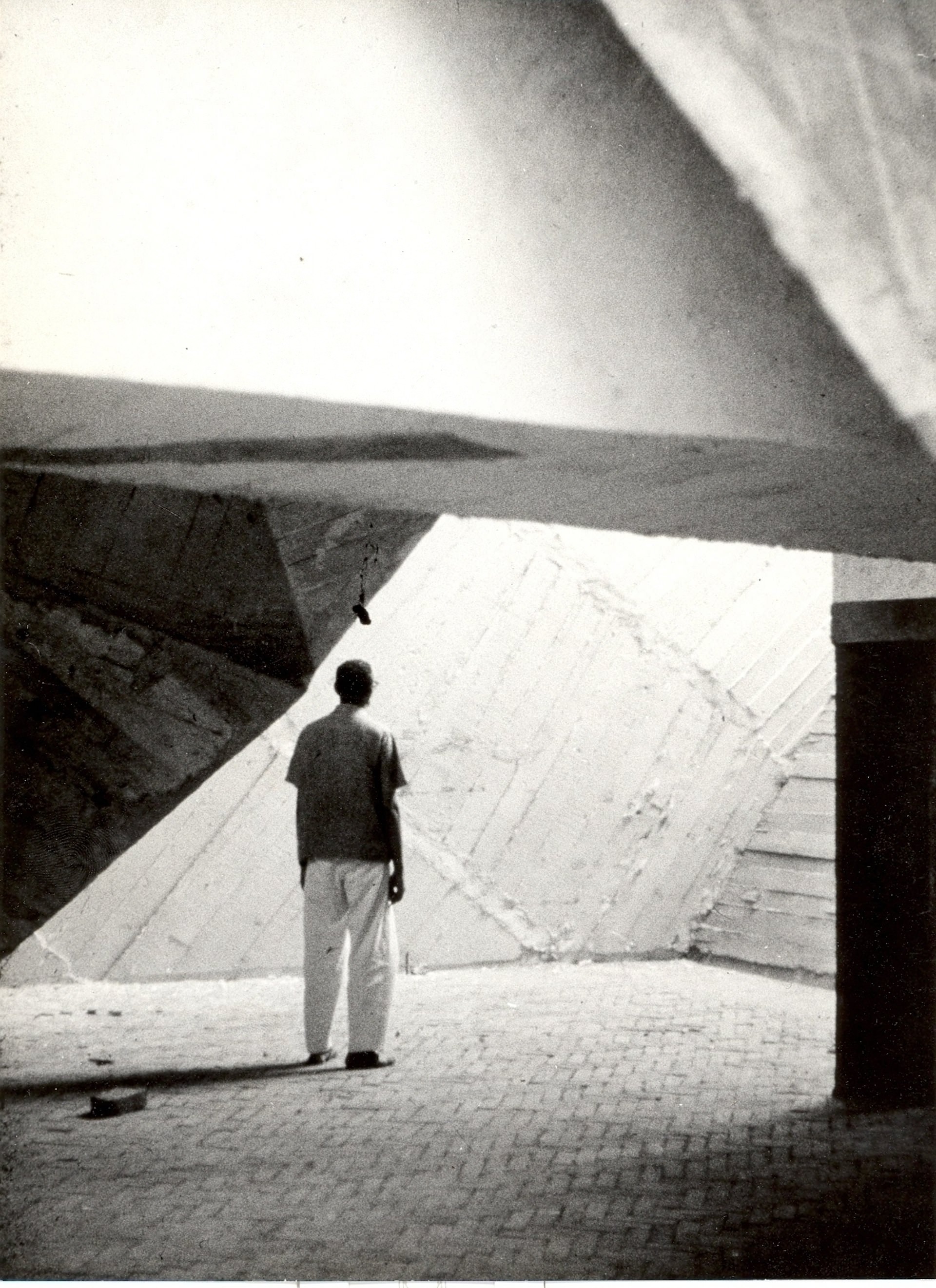
Hindustan Lever Pavilion, Delhi, 1961. (Photo © Charles Correa Associates)
Robert Wilson: Your work has been cited as being key in the development of Indian architecture over the last 50 years. You have described how the work of Le Corbusier gave you the freedom to invent architecture of the future. At the beginning of your career, were you hoping to invent a new architecture for post-independence India?
Charles Correa: Do you remember George Orwell’s fable Animal Farm? The farmer has this big house that intimidates all the animals – so they decide to revolt and burn his house down. But when he runs away, they are too excited and tired – and a few days later the pigs move into the house and start running the farm exactly as the farmer did. And if a cow or horse protests, the pigs just show them a picture of the farmer’s house to frighten them. In a sense, that’s what we are doing in India. In New Delhi, Edwin Lutyens was specifically commissioned to create an architecture that projected the imagery of a “superior civilization.” Today we’re using those very images to control our own people! And whenever our government needs a new building, the Public Works Department follows the “Lutyens style” – builds an extension of the “farmer’s house.” Surely after 60 years of independence, we should find our own way? That was Corbusier’s message. Whatever the drawbacks of Chandigarh – and there are many – it is not the “farmer’s House.” Corb showed us that we could open a door into another landscape of our own making.
This element of invention in architecture has been very much underplayed over the last few decades with all the talk of contextualism. Look at Frank Lloyd Wright’s Robie house in Chicago – in 1908, it was a fabulous invention, like a spaceship that had just landed!
-
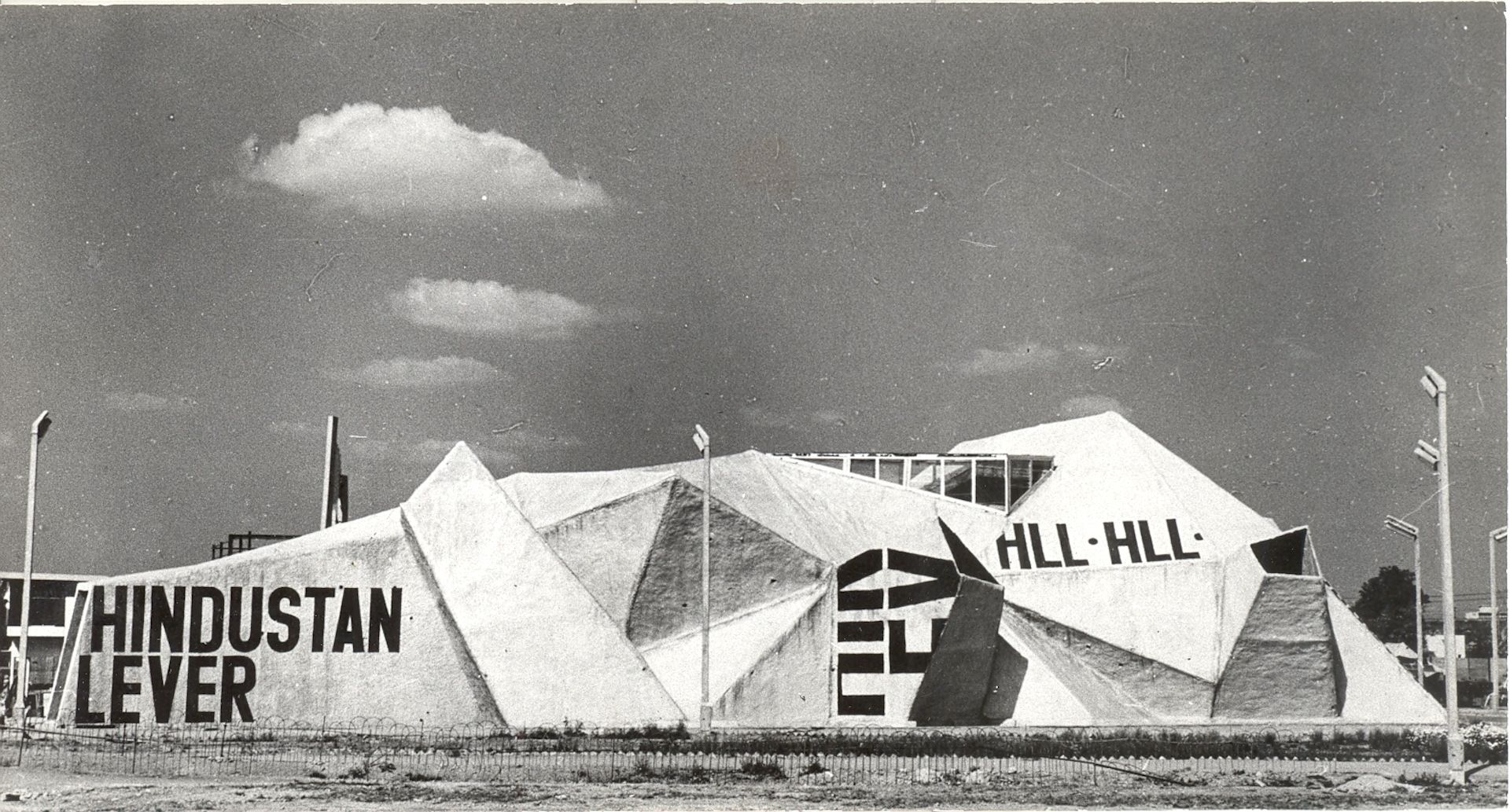
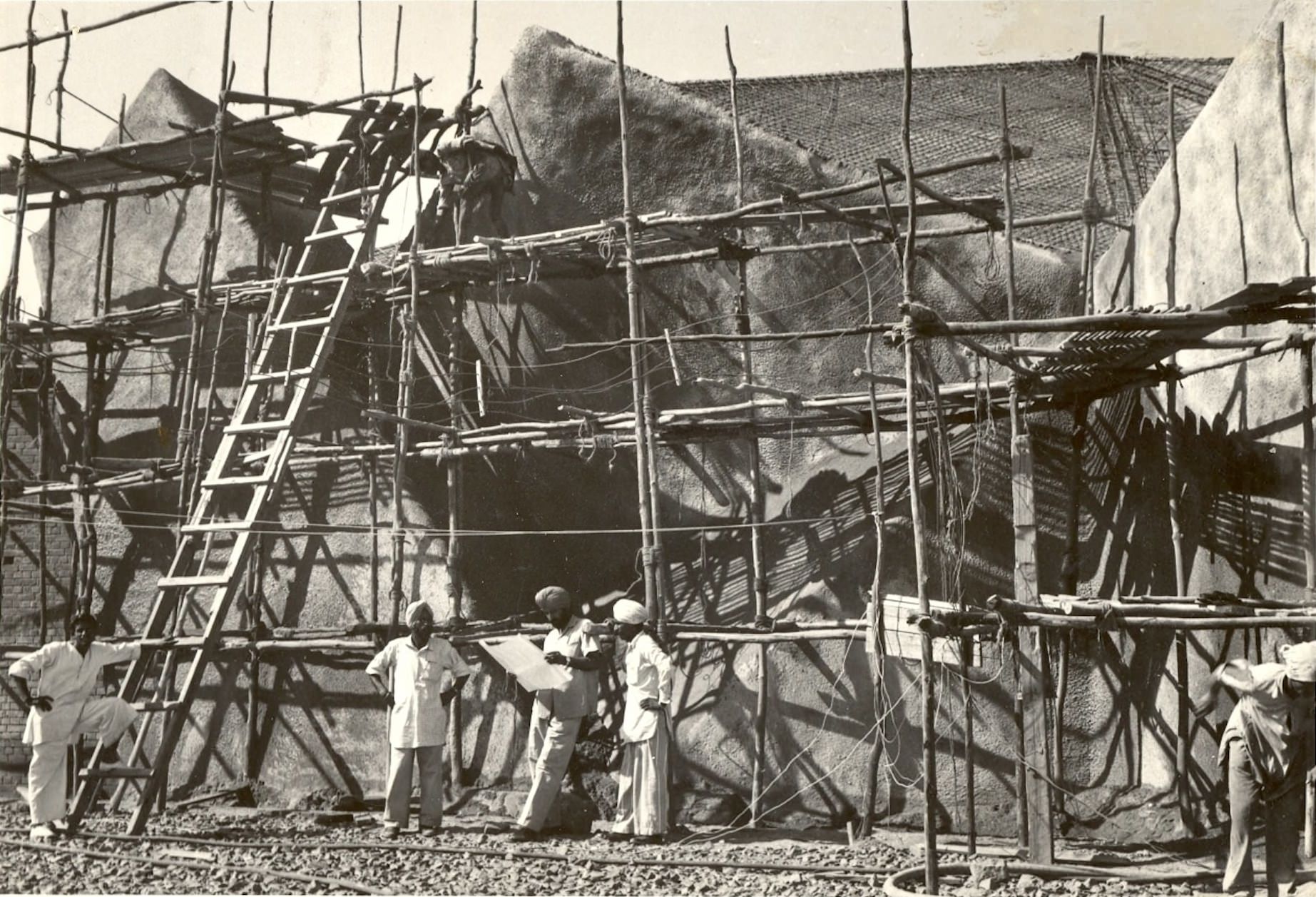
Construction and completion of Hindustan Lever Pavilion, Delhi, 1961. (Photos © Charles Correa Associates)
This sense of invention you mention can clearly be seen in an early project of yours, the Hindustan Lever Pavilion, where you seemed to be testing ideas and materials…
I wanted to see what happens when you break the orthogonal compass, the four directions that define our world: north, south east, west. Though the project was quite small, inside you lost all sense of orientation and scale – it could look immense or tiny. It was wonderful. But I wasn’t interested in investigating this further. How many times can you play that trick? One of the French Symbolist poets – was it Verlaine? – said the goal of art was to disorder the senses. I don’t agree. Mozart didn’t set out to break rules – but to perfect them.
One significant aspect of your work is its engagement with climate. You’ve said that “the wellspring of the imagination comes from the climate.”
It is wonderful how climate can generate architectural form. This is true of the igloo, it’s true of the Pacific islands. It’s true everywhere. You have to respect climate. You have to look at local materials, local technology, and then you can come up with elegant, surprising architecture.
You’ve been critical of Le Corbusier’s response to climate.
Well, Corb did respond to climate with his invention of brise-soleil. But unfortunately brise-soleil was more of a visual proposition for him. When you actually use those concrete louvres, you find firstly that they get full of pigeons – in India at least – and secondly, that they heat up during the day and then act like a radiator in the evening. It would have been better if instead of concrete, he had used a lighter material like wood, which cools much faster. Or smartest of all: build a verandah, which shades the main living area, provides circulation – and cools down right away.
-
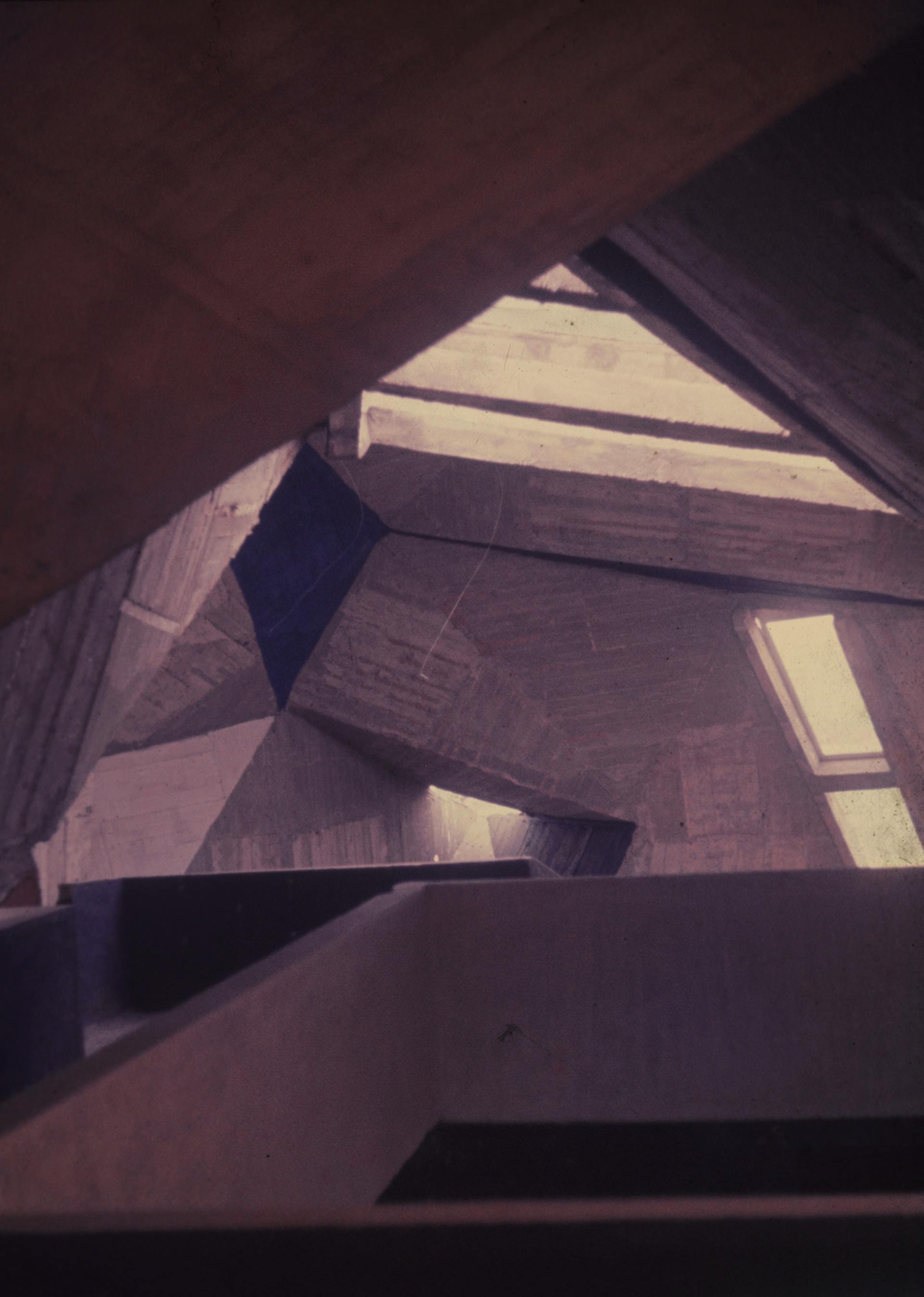
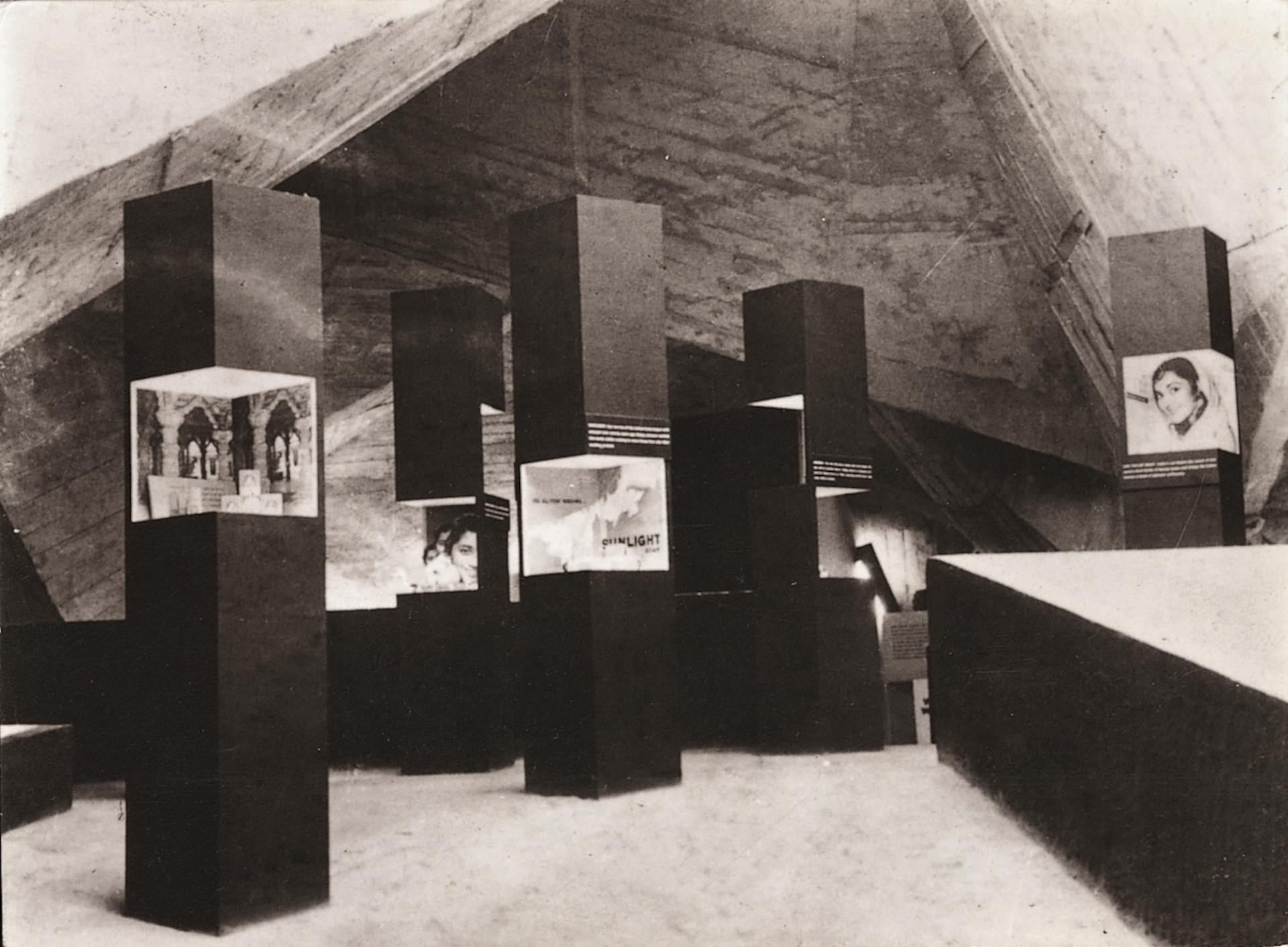
Hindustan Lever Pavilion, Delhi, 1961
This extraordinary pavilion was designed by Charles Correa for one of the industrial fairs held annually in Delhi after independence. Its innovative concrete shell was shotcreted directly onto the steel reinforcement, configured intuitively by the great structural engineer Mahendra Raj. The result was an astonishing array of spaces in its interior, with ramps and platforms accentuating the fractured, scale-less sense of space for visitors. (Photos © Charles Correa Associates)»Corbusier was not religious, but he had a profound sense of the sacred, the metaphysical – otherwise how on earth could he ever have designed Ronchamp?«
-
The Tube House, a significant early housing project of yours, was shaped by its use of ventilation.
Yes. I love those wind-catcher houses found in Iran and Hyderabad, Sind. Those really are machines for living! In the most romantic sense: the way Le Corbusier meant it. He didn’t say “a machine for living, how prosaic” – but rather, “how romantic, how fantastic!” Like a ship is a machine for crossing the ocean.
You later applied this idea of housing shaped through its ventilation to a high-rise, the multi-storey Kanchanjunga apartments. Both these and the Tube House are now seen as ahead of their time. Did these set a model for other developments?
Not really. Back in the 1960s and 70s, when India was socialist, we didn’t have enough electricity for air conditioning – and that was a big challenge to the architect’s imagination. Today you not only have enough electricity, you have mechanical engineers who can solve any problem. So you don’t have to shape a building in response to climate: you can build a glass tower and just use low-e glazing. It’s so sad. It reduces the architect’s imagination to fashion.
Architecture is a three-legged stool: climate, technology and culture. Together they generate the building. This can be seen clearly in the Borobadur shrine in Java, which represents the seven levels of Nirvana. And in the great cathedrals of Europe expressing the Christian mind-set. So in my later work, like the Jawahar Kala Kendra cultural centre in Jaipur, the design has been shaped by climatic factors – like open-to-sky space and air ventilation – but it is also a metaphor for other values.
You’ve often stressed the importance of open space.
Open-to-sky space is very important in a warm climate. It has a practical aspect: in a one-room house for a poor family, a courtyard becomes an additional room. But there are metaphysical aspects as well. Open space means being in the open, like the guru sitting under a tree. It’s beyond education – it’s enlightenment. When you sit on the seashore, something happens to your mind.
Architecture has always had this mythical or metaphysical component. It’s extraordinary that since the beginning of time, man has used the most inert materials, like brick and stone, to express the invisibilia that move him. Corbusier was not religious, but he had a profound sense of the sacred, the metaphysical – otherwise how on earth could he ever have designed Ronchamp?
-
»Architecture is a usable art. It is sculpture – but sculpture usable by human beings«
Jawahar Kala Kendra. (Photo © Charles Correa Associates, courtesy The British Architectural Library, RIBA)
-
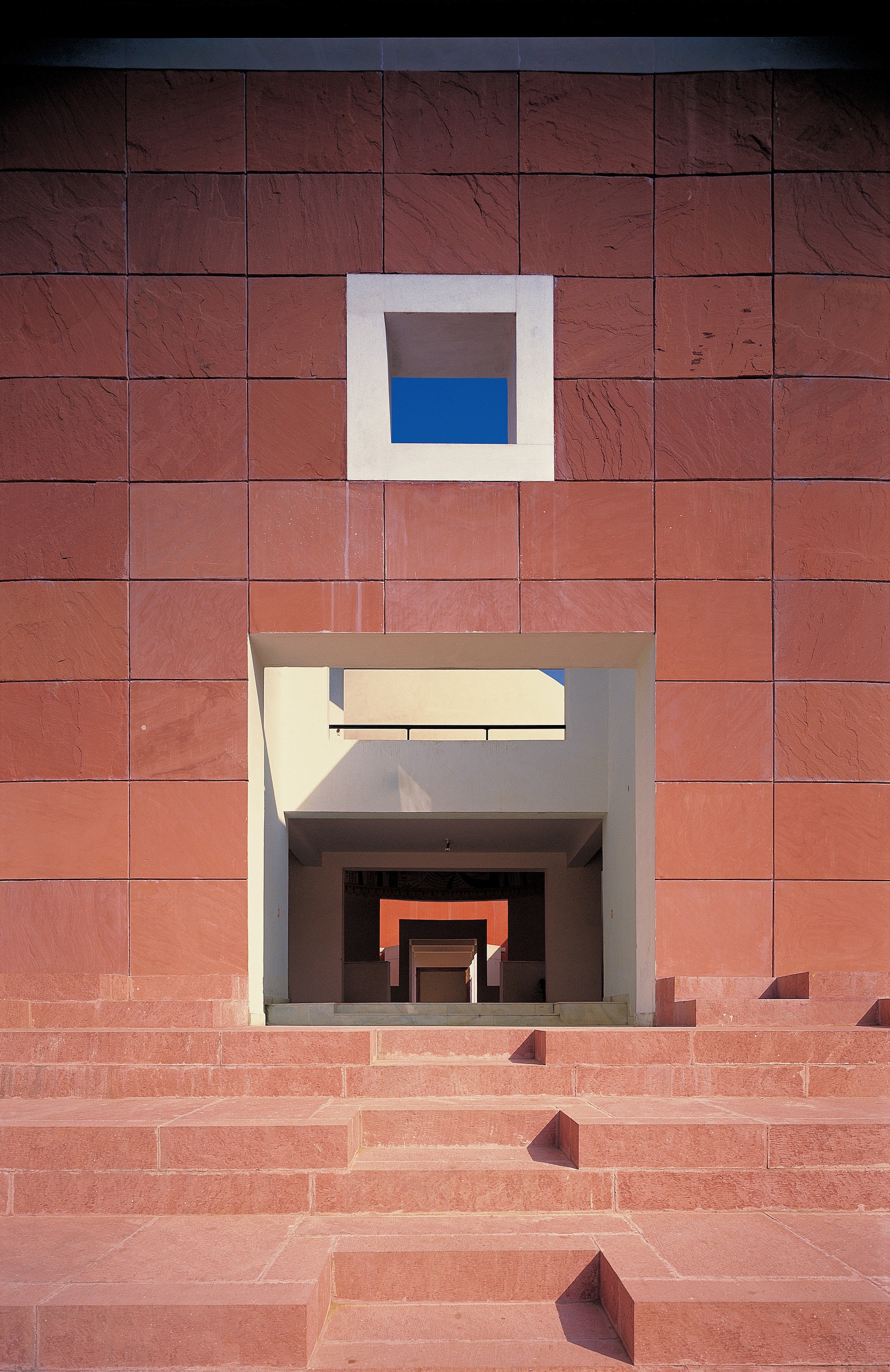
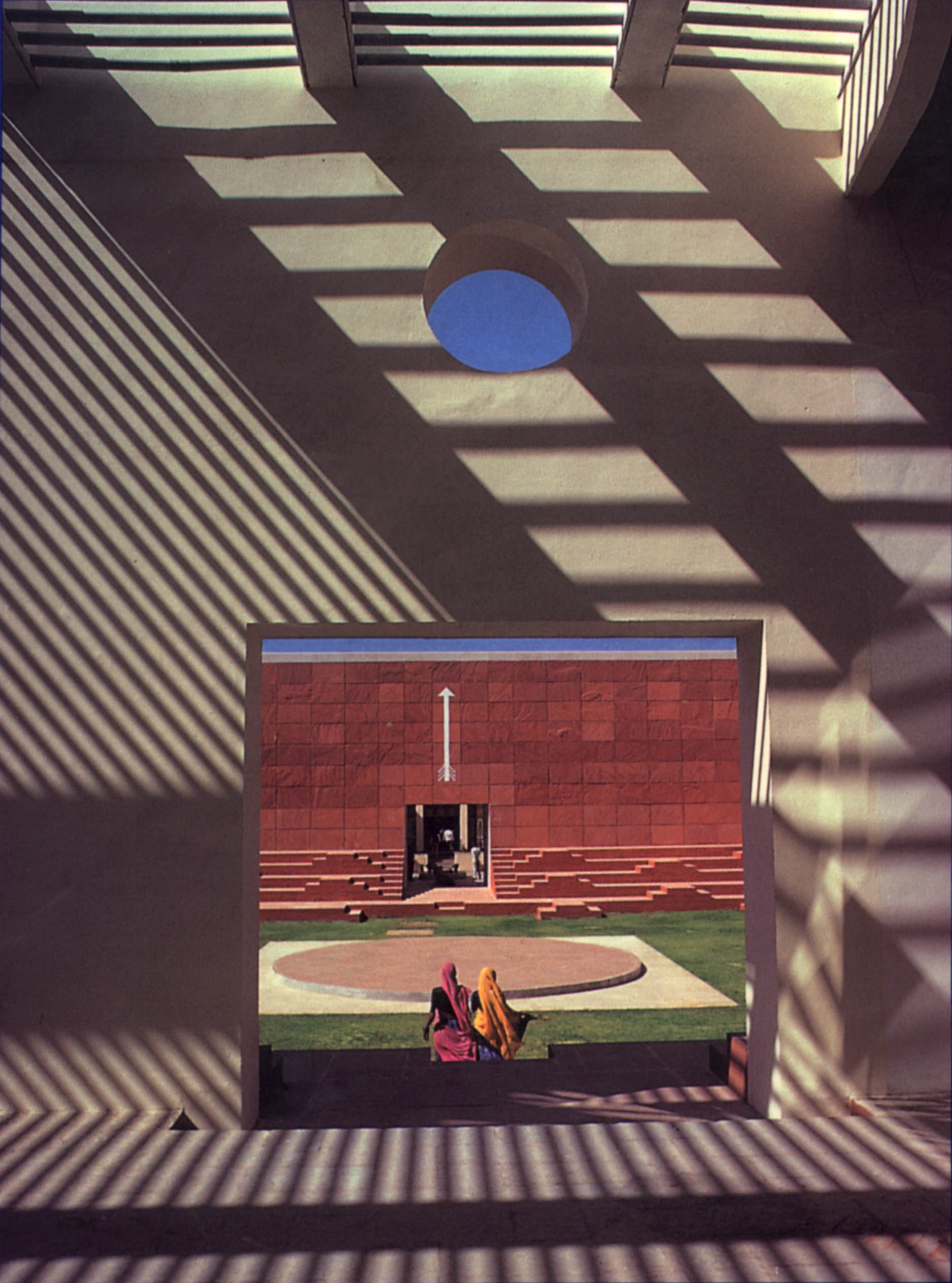
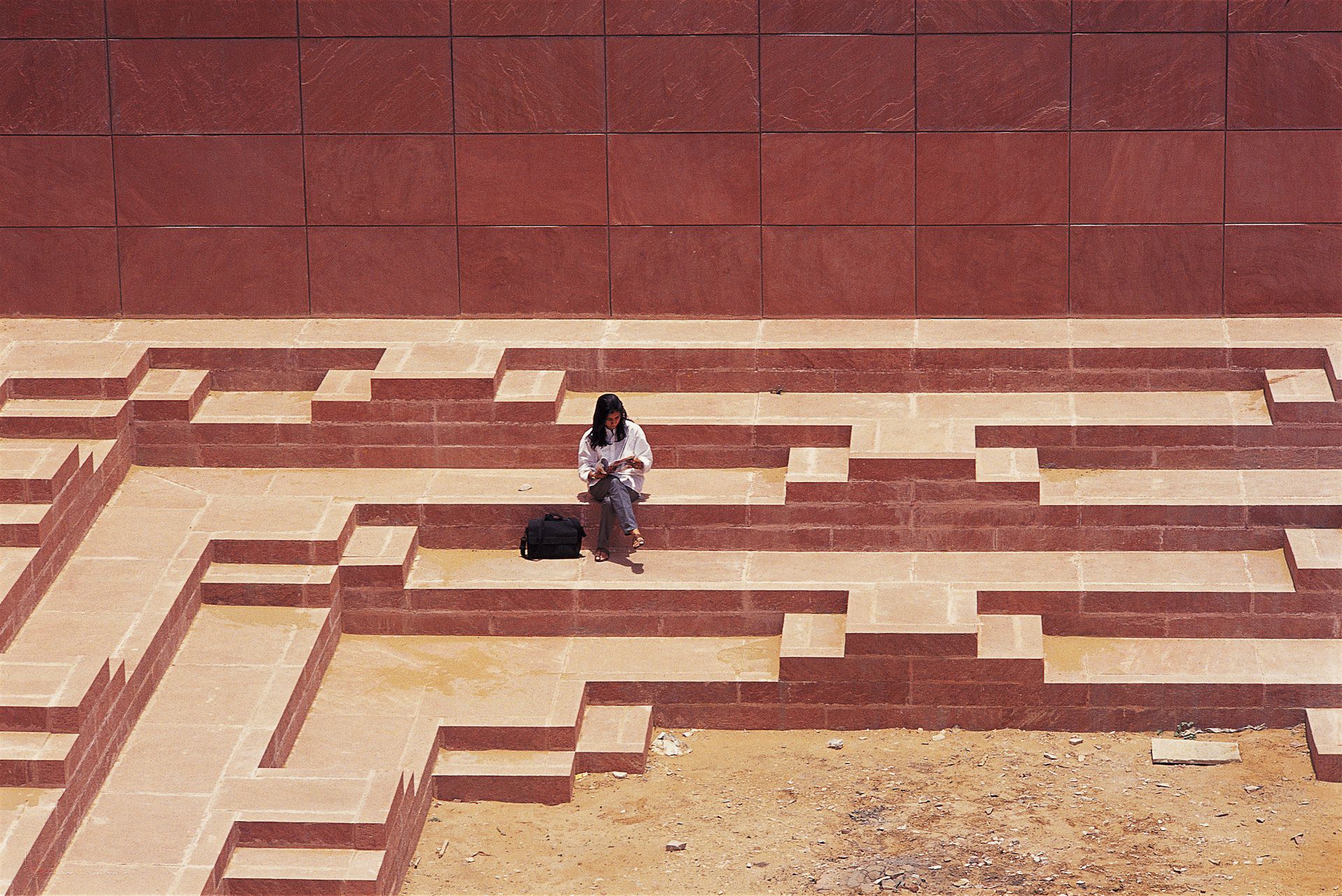
Jawahar Kala Kendra, Jaipur, 1986–92
The city of Jaipur is astonishing for its synthesis of past and future, of material and metaphysical worlds. Maharaja Jai Singh, who built the fabled pink city, was moved by both the ancient mandala of nine planets (Avgraha) and contemporary ideals of science and progress. This arts centre, dedicated to India’s first Prime Minister Jawaharlal Nehru, is likewise double-coded: a contemporary building based on an archaic notion of the cosmos. (Photos © Charles Correa Associates, courtesy The British Architectural Library, RIBA) -
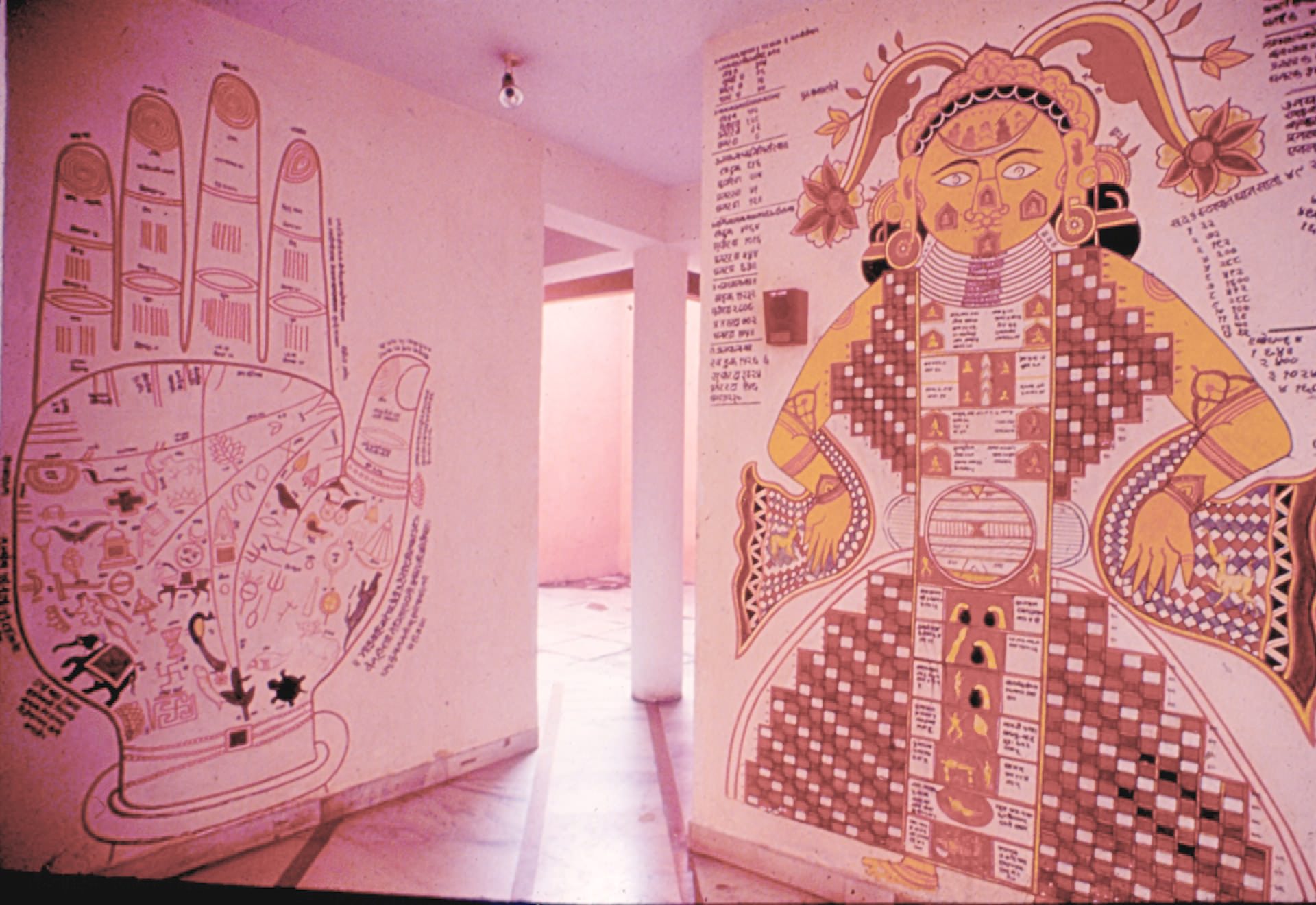

Jawahar Kala Kendra. (Photos © Charles Correa Associates)
You have often cited Corbusier as an influence, rather than Mies. Do you think Mies missed this mythical or spiritual side?
Mies just never taught me as much. If you look at his early work in Germany, there is a lovely sinister quality like in the old German movies, such as The Cabinet of Dr Caligari. The expressionism, the dark shadows. I think even the glass building he sketched back then was quite enigmatic. When he crossed over to the USA, he got lost in the banality of American downtown. The Lake Shore Drive apartments, they still had the old Miesian magic – which in the later work somehow got dissipated. He knew it too, I think.
Designing housing has always been important to you. Do you think designing housing helps ground a practice?
Yes, it’s sad how housing is now no longer part of an architect’s oeuvre, as it used to be, right up to Gropius, Mies, Corb, Wright, et al. Today housing is considered very downmarket: if you are really successful you should be designing only museums and airports! That is ridiculous.
In an architectural practice, there are always many different projects running simultaneously – even in a small office like mine, where typically we’ve had about 10 or 12 architects, we always had 5 or 6 projects. This allows cross-fertilization between projects, large and small – which is very important. Something you have learnt working on a small house becomes relevant in a large planning project at quite another scale. And vice versa. Having even one housing project in an office encourages this crucial process of cross-fertilization. Architects must break the habit of looking down at housing, as something that mainly concerns developers. Nonsense. Housing is far too important to be just left to market forces.
-
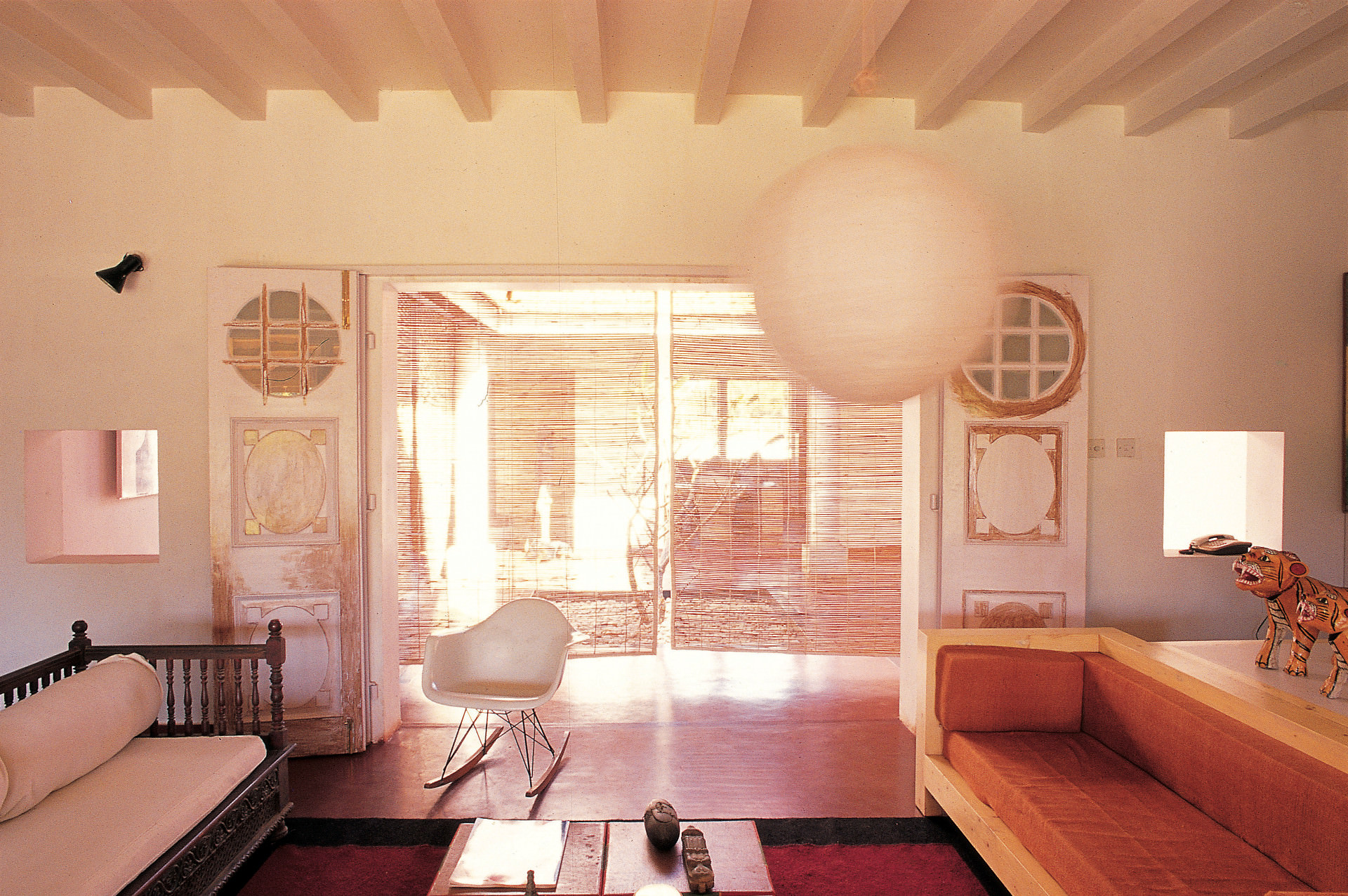

House at Koramangala, Bangalore, 1985-88
This house and studio were inspired by traditional Hindu houses in Tamil Nadu and Goa, which are usually organised around a small central courtyard, with a tree or tuisi plant in the middle. Here, the front door was intentionally placed off centre on the entrance façade, leading one along a shifting axis to arrive at the main courtyard – which acts as the central focus, whilst dividing the house from the studio, and providing light and ventilation to the rooms that surround it. (Photos © Charles Correa Associates, courtesy The British Architectural Library, RIBA)
-
You’ve talked of architecture as sculpture. It is quite unfashionable to talk about architecture as an art today.
Architecture is a usable art. It is sculpture – but sculpture usable by human beings – with doors and windows, openings for light and air. And these openings do not diminish the qualities of the sculpture – on the contrary, they complete it. In short: architecture is sculpture with the gestures of human occupation. But perhaps it is precisely this usability that makes it so unfashionable. Henry Moore was a great sculptor who didn’t make anything functional. However Isamu Noguchi, who was also a great sculptor, designed useful objects like tables – and in the modern western context that diminishes his artistic importance. Isn’t that extraordinary? Have we forgotten that one of the greatest Renaissance artists, Benvenuto Cellini, was primarily a craftsman? Thank God in India the word for artist and the word for craftsman is the same.
In your practice you’ve always had a strong engagement with the city as a whole.
I think that is true of many architects. You can’t help getting involved with urban issues – especially in India, where they are so epic. So you just can’t just go on doing your mad jeweller’s act in one corner of the city – you are bound to see what else is going on around you. Working in India has a lot of frustrations, but the chance to address larger and more fundamental issues is one of its greatest opportunities.

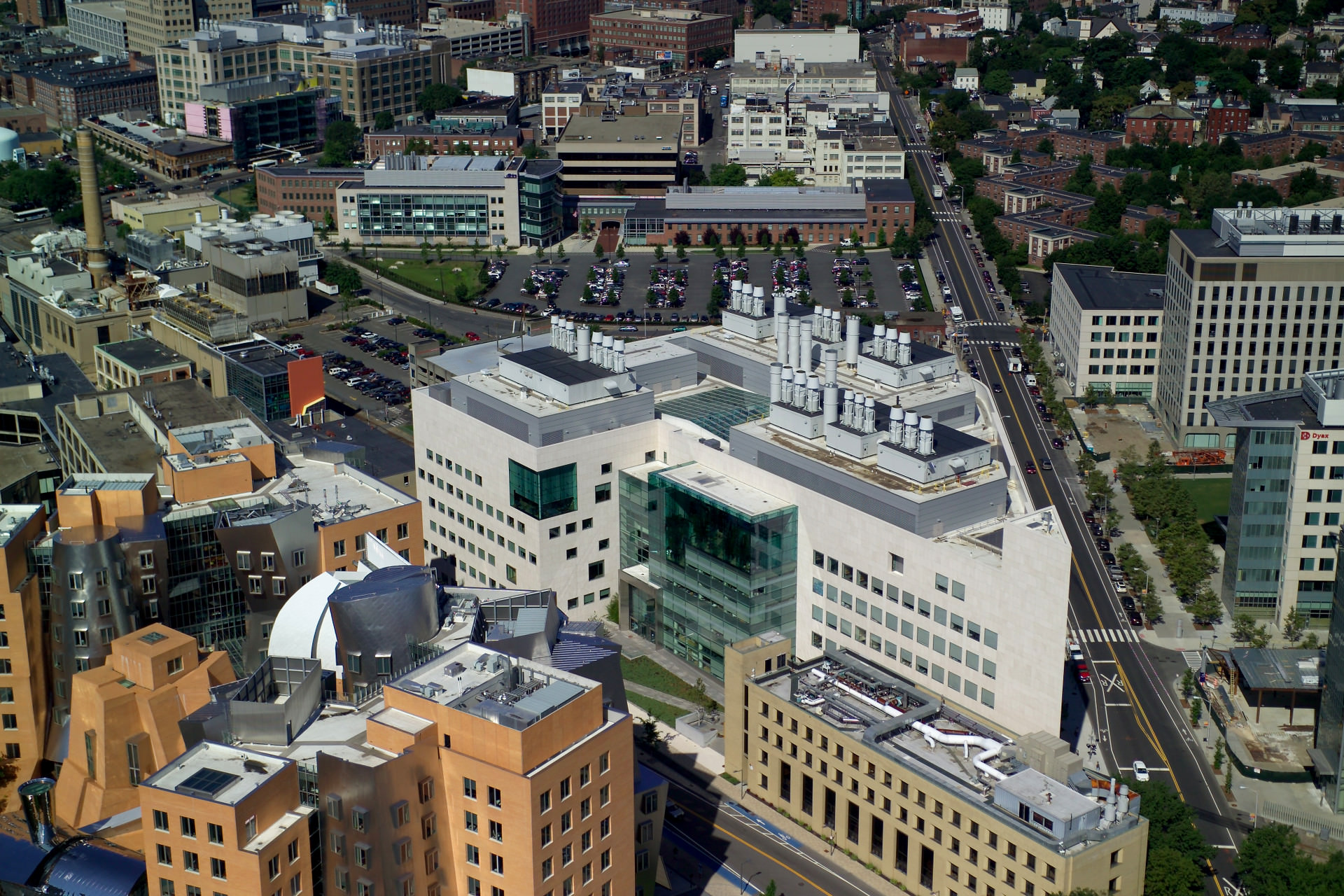
Brain and Cognitive Sciences Complex, MIT Cambridge, Massachusetts, 2000-05
This building’s site, in the Kendall Square area of MIT campus, straddles two pieces of land separated by a railroad track. The complicated location is matched by the building’s complex programming demands: it houses three major research institutes with separate identities and entrances. Yet inside the complex all three are melded together within the 450,000-square-foot facility, the largest of its kind in the world. (Photo © Charles Correa Associates, courtesy The British Architectural Library, RIBA)
-
Search
-
FIND PRODUCTS
PRODUCT GROUP
- Building Materials
- Building Panels
- Building technology
- Façade
- Fittings
- Heating, Cooling, Ventilation
- Interior
- Roof
- Sanitary facilities
MANUFACTURER
- 3A Composites
- Alape
- Armstrong
- Caparol
- Eternit
- FSB
- Gira
- Hagemeister
- JUNG
- Kaldewei
- Lamberts
- Leicht
- Solarlux
- Steininger Designers
- Stiebel Eltron
- Velux
- Warema
- Wilkhahn
-
Follow Us
Tumblr
New and existing Tumblr users can connect with uncube and share our visual diary.
»Architecture starts when you carefully put two bricks together. There it begins.«
Ludwig Mies van der Rohe
Keyboard Shortcuts
- Supermenu
- Skip Articles
- Turn Pages
- Contents


